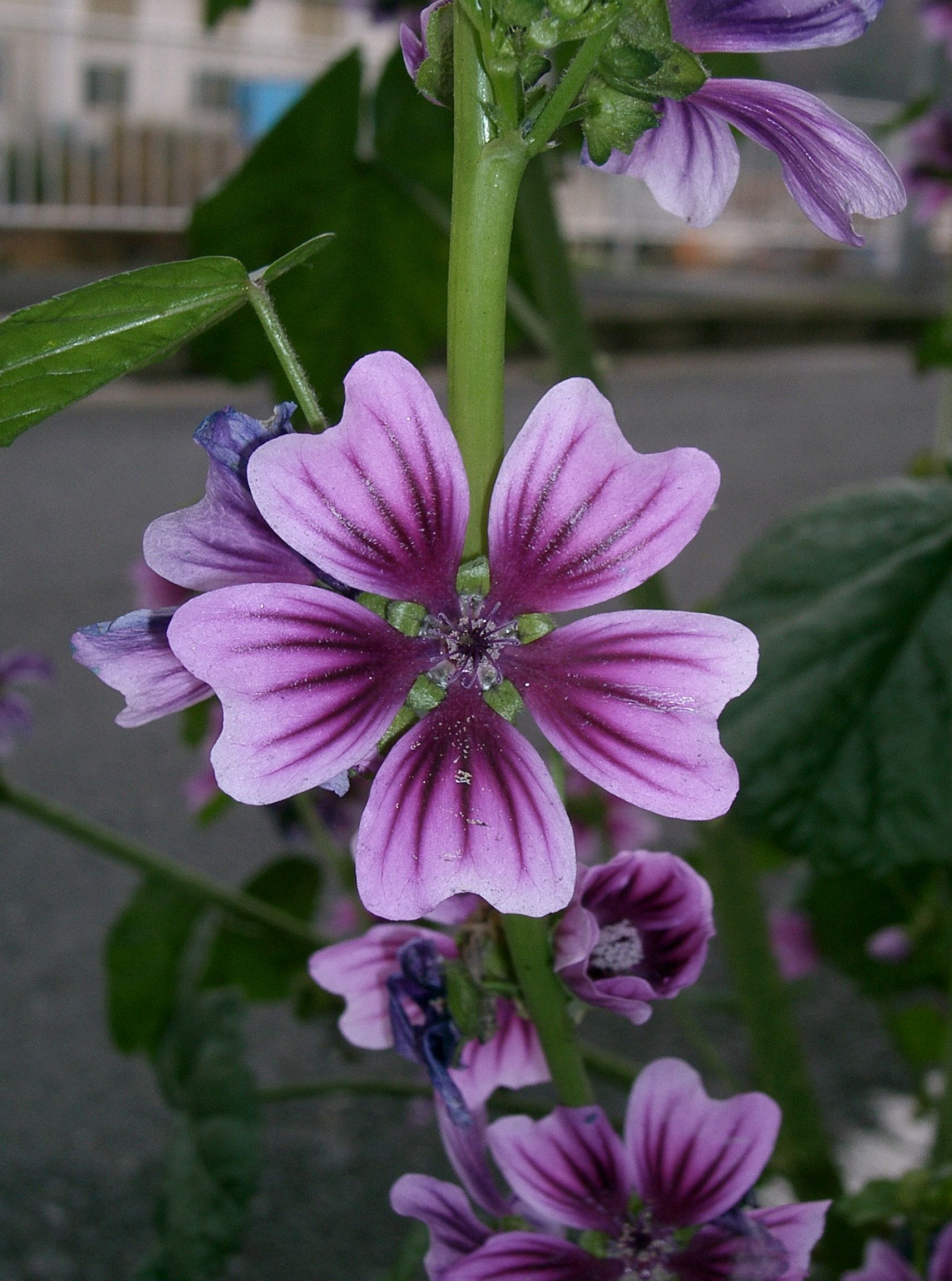|
Gilesia
''Gilesia'' is a monotypic genus of flowering plants belonging to the family Malvaceae. It is also in the Byttnerioideae subfamily and it only contains one species, ''Gilesia biniflora'' F.Muell. It is commonly known as the 'western tar-vine'. Its native range is central Australia. It is named in honour of Christopher Giles (c. 1840 – 1917), an English surveyor, and Ernest Giles William Ernest Powell Giles (20 July 1835 – 13 November 1897), best known as Ernest Giles, was an Australian explorer who led five major expeditions to parts of South Australia and Western Australia. Early life Ernest Giles was born in Bris ... (1835–1897) an Australian explorer. The specific Latin epithet of ''biniflora'' is derived from the Latin bīnus (“double, twofold”) and also 'flora' meaning plant. It was first described and published in ''Fragmenta Phytographiae Australiae'' (Fragm.) Vol.9 on page 42 in 1875. References {{Taxonbar, from=Q8964062 Malvaceae Malvaceae gene ... [...More Info...] [...Related Items...] OR: [Wikipedia] [Google] [Baidu] |
Ernest Giles
William Ernest Powell Giles (20 July 1835 – 13 November 1897), best known as Ernest Giles, was an Australian explorer who led five major expeditions to parts of South Australia and Western Australia. Early life Ernest Giles was born in Bristol, England, the eldest son of William Giles ( – 28 May 1860), a merchant, and Jane Elizabeth Giles, ''née'' Powell ( – 15 March 1879). Their family had been in comfortable circumstances but fell on hard times and emigrated to Australia. William Giles was living in North Adelaide by 1850 and Melbourne by 1853. William was later employed by Customs in Victoria, and his wife founded a successful school for girls in that colony. Giles was educated at Christ's Hospital school, Newgate, London. In 1850, at the age of 15, he emigrated to Australia, joining his parents in Adelaide. In 1852 Giles went to the Victorian goldfields, then became a clerk at the Post Office in Melbourne, and later at the County Court. Soon tiring of town life Gi ... [...More Info...] [...Related Items...] OR: [Wikipedia] [Google] [Baidu] |
Byttnerioideae
Byttnerioideae is a subfamily of the flowering plant family Malvaceae. Tribes and genera Four tribes are recognised by the Germplasm Resources Information Network: Byttnerieae *'' Abroma'' Jacq. *'' Ayenia'' L. *''Byttneria'' Loefl. *'' Kleinhovia'' L. *'' Leptonychia'' Turcz. *'' Megatritheca'' Cristóbal *'' Rayleya'' Cristóbal *'' Scaphopetalum'' Mast. Hermannieae *'' Dicarpidium'' F.Muell. *''Gilesia'' F.Muell. *'' Hermannia'' L. *'' Melochia'' L. *'' Waltheria'' L. Lasiopetaleae *''Commersonia'' J.R.Forst. & G.Forst. *''Guichenotia'' J.Gay *''Hannafordia'' F.Muell. *'' Keraudrenia'' J.Gay *''Lasiopetalum'' Sm. *''Lysiosepalum'' F.Muell. *'' Maxwellia'' Baill. *'' Rulingia'' R.Br. *'' Seringia'' J.Gay *''Thomasia'' J.Gay Theobromateae *'' Glossostemon'' Desf. *'' Guazuma'' Mill. *'' Herrania'' Goudot *''Theobroma ''Theobroma'' is a genus of flowering plants in the mallow family, Malvaceae, that is sometimes classified as a member of Sterculiaceae. It cont ... [...More Info...] [...Related Items...] OR: [Wikipedia] [Google] [Baidu] |
Christopher Giles
Alfred Giles (18 February 1846 – 20 March 1931), born in Datchet, England, was a South Australian bushman, drover and explorer who crossed Australia from south to north seven times, mostly in connection with the building of the Overland Telegraph Line 1870–1872. History Giles was a son of Christopher Giles Snr (25 March 1802 – 26 April 1884), a member of the Corn Exchange, London, and his wife Hannah Giles, née Tester (25 December 1812 – 17 February 1900). He came to Australia with his parents, three brothers and two sisters, leaving London on 21 January 1849 on the ''Calcutta'', arriving in South Australia on 22 June 1849. They were accompanied by a large quantity of merchandise and other property, including a portable cottage, which they erected at his 400-acre property on the River Wakefield. In 1853 his father took up a lease of land at Ketchowla Station which is located between Terowie and Morgan. Giles and his family were later joined by Hillary Boucau ... [...More Info...] [...Related Items...] OR: [Wikipedia] [Google] [Baidu] |
Monotypic
In biology, a monotypic taxon is a taxonomic group (taxon) that contains only one immediately subordinate taxon. A monotypic species is one that does not include subspecies or smaller, infraspecific taxa. In the case of genera, the term "unispecific" or "monospecific" is sometimes preferred. In botanical nomenclature, a monotypic genus is a genus in the special case where a genus and a single species are simultaneously described. In contrast, an oligotypic taxon contains more than one but only a very few subordinate taxa. Examples Just as the term ''monotypic'' is used to describe a taxon including only one subdivision, the contained taxon can also be referred to as monotypic within the higher-level taxon, e.g. a genus monotypic within a family. Some examples of monotypic groups are: Plants * In the order Amborellales, there is only one family, Amborellaceae and there is only one genus, '' Amborella'', and in this genus there is only one species, namely ''Amborella trichopoda. ... [...More Info...] [...Related Items...] OR: [Wikipedia] [Google] [Baidu] |
Flowering Plant
Flowering plants are plants that bear flowers and fruits, and form the clade Angiospermae (), commonly called angiosperms. The term "angiosperm" is derived from the Greek words ('container, vessel') and ('seed'), and refers to those plants that produce their seeds enclosed within a fruit. They are by far the most diverse group of land plants with 64 orders, 416 families, approximately 13,000 known genera and 300,000 known species. Angiosperms were formerly called Magnoliophyta (). Like gymnosperms, angiosperms are seed-producing plants. They are distinguished from gymnosperms by characteristics including flowers, endosperm within their seeds, and the production of fruits that contain the seeds. The ancestors of flowering plants diverged from the common ancestor of all living gymnosperms before the end of the Carboniferous, over 300 million years ago. The closest fossil relatives of flowering plants are uncertain and contentious. The earliest angiosperm fossils ar ... [...More Info...] [...Related Items...] OR: [Wikipedia] [Google] [Baidu] |
Malvaceae
Malvaceae, or the mallows, is a family of flowering plants estimated to contain 244 genera with 4225 known species. Well-known members of economic importance include okra, cotton, cacao and durian. There are also some genera containing familiar ornamentals, such as ''Alcea'' (hollyhock), ''Malva'' (mallow), and ''Tilia'' (lime or linden tree). The largest genera in terms of number of species include ''Hibiscus'' (300 species), ''Sterculia'' (250 species), ''Dombeya'' (250 species), '' Pavonia'' (200 species) and '' Sida'' (200 species). Taxonomy and nomenclature The circumscription of the Malvaceae is controversial. The traditional Malvaceae '' sensu stricto'' comprise a very homogeneous and cladistically monophyletic group. Another major circumscription, Malvaceae ''sensu lato'', has been more recently defined on the basis that genetics studies have shown the commonly recognised families Bombacaceae, Tiliaceae, and Sterculiaceae, which have always been considered closely allie ... [...More Info...] [...Related Items...] OR: [Wikipedia] [Google] [Baidu] |
Malvaceae Genera
Malvaceae, or the mallows, is a family of flowering plants estimated to contain 244 genera with 4225 known species. Well-known members of economic importance include okra, cotton, cacao and durian. There are also some genera containing familiar ornamentals, such as ''Alcea'' (hollyhock), ''Malva'' (mallow), and ''Tilia'' (lime or linden tree). The largest genera in terms of number of species include ''Hibiscus'' (300 species), ''Sterculia'' (250 species), ''Dombeya'' (250 species), '' Pavonia'' (200 species) and '' Sida'' (200 species). Taxonomy and nomenclature The circumscription of the Malvaceae is controversial. The traditional Malvaceae '' sensu stricto'' comprise a very homogeneous and cladistically monophyletic group. Another major circumscription, Malvaceae ''sensu lato'', has been more recently defined on the basis that genetics studies have shown the commonly recognised families Bombacaceae, Tiliaceae, and Sterculiaceae, which have always been considered closely allie ... [...More Info...] [...Related Items...] OR: [Wikipedia] [Google] [Baidu] |
Plants Described In 1875
Plants are predominantly photosynthetic eukaryotes of the kingdom Plantae. Historically, the plant kingdom encompassed all living things that were not animals, and included algae and fungi; however, all current definitions of Plantae exclude the fungi and some algae, as well as the prokaryotes (the archaea and bacteria). By one definition, plants form the clade Viridiplantae (Latin name for "green plants") which is sister of the Glaucophyta, and consists of the green algae and Embryophyta (land plants). The latter includes the flowering plants, conifers and other gymnosperms, ferns and their allies, hornworts, liverworts, and mosses. Most plants are multicellular organisms. Green plants obtain most of their energy from sunlight via photosynthesis by primary chloroplasts that are derived from endosymbiosis with cyanobacteria. Their chloroplasts contain chlorophylls a and b, which gives them their green color. Some plants are parasitic or mycotrophic and have lost ... [...More Info...] [...Related Items...] OR: [Wikipedia] [Google] [Baidu] |




